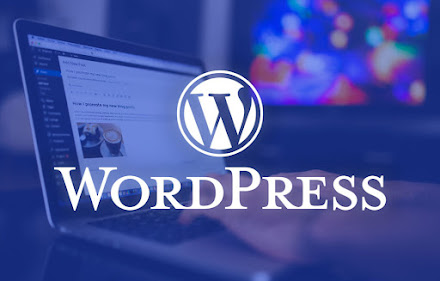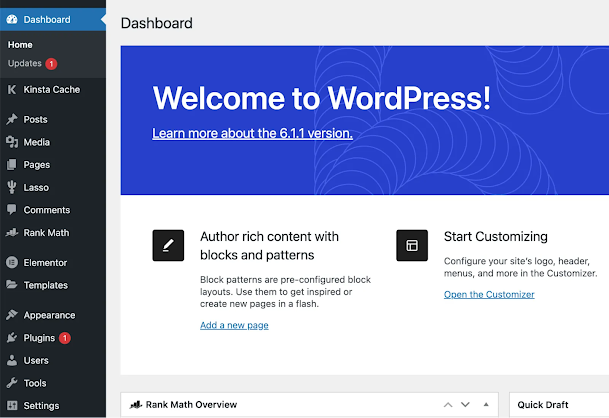Word Press for beginners
Certainly! Creating attractive and effective titles for your WordPress content is crucial to attract reader attention and improve SEO. Below are some examples of different types of content:
A versatile and easy-to-use content management system (CMS), WordPress has become a cornerstone of the web development landscape. WordPress is responsible for over 40% of all websites on the Internet and provides a robust platform for individuals, businesses, and organizations to create and manage their online presence. One of its main strengths lies in its simplicity, which allows users with different technical knowledge to create and customize websites effortlessly.
The heart of WordPress is its extensive library of themes and plugins, giving users the flexibility to design functional and visually appealing websites. Whether it's a blog, portfolio, e-commerce site, or business page, WordPress meets diverse needs through a variety of themes, allowing users to customize the look of their websites to match their business identity. brand. The heart of WordPress is its extensive library of themes and plugins, giving users the flexibility to design functional and visually appealing websites. Whether it's a blog, portfolio, e-commerce site, or business page, WordPress meets diverse needs through a variety of themes, allowing users to customize the look of their websites to match their business identity. brand.
In addition to its aesthetics, WordPress stands out for its functionality with the help of plugins. These extensions enhance the core capabilities of WordPress and provide features like SEO optimization, security improvements, eCommerce functionality, and much more. The open source nature of WordPress fosters a vibrant community of developers who continually contribute to its improvement, ensuring a dynamic and constantly evolving platform.
Additionally, WordPress is known for its search engine optimization (SEO) ease. The clean and well-organized code, along with various SEO plugins, allows users to optimize their content for better search engine visibility. This makes WordPress an ideal choice for people and businesses who want to improve their online search capabilities. In addition to its aesthetics, WordPress stands out for its functionality with the help of plugins. These extensions enhance the core capabilities of WordPress and provide features like SEO optimization, security improvements, eCommerce functionality, and much more. The open source nature of WordPress fosters a vibrant community of developers who continually contribute to its improvement, ensuring a dynamic and constantly evolving platform.
Additionally, WordPress is known for its search engine optimization (SEO) ease. The clean and well-organized code, along with various SEO plugins, allows users to optimize their content for better search engine visibility. This makes WordPress an ideal choice for people and businesses who want to improve their online search capabilities.
Blog Post Titles:
“Unleashing the Power of [Theme]: A Complete Guide”
“The Art of [Skill/Activity]: Mastering the Basics”
"Exploring [trends/innovation]: what you need to know"
Product or service pages:
"[Product/Service]: redefining [Industry/Niche]"
“Increase your [experience/result] with [product/service]”
"Introducing [new feature/update]: what's in [product/service]"
About us page:
"Get to know [your company]: pioneers in [your industry]"
“Our Journey: From Humble Beginnings to [Current Achievements]”
"Behind the scenes: the heart of [your company]"
Additionally, WordPress is known for its search engine optimization (SEO) ease. The clean and well-organized code, along with various SEO plugins, allows users to optimize their content for better search engine visibility. This makes WordPress an ideal choice for people and businesses who want to improve their online search capabilities.
Contact page:
"Get Connected: Contact [Your Company] Today"
“Let's start a conversation: contact [your company name]”
"Ready to help - contact [your company] for help"
Portfolio page:
“Showing excellence: the best of [your company]”
"Witness our craftsmanship: highlights from [your company's] portfolio"
“A visual symphony: showcase [of your business]”
FAQ Page:
"FAQ Decoded: Your Ultimate Guide to [Your Industry]"
"Inquiring minds want to know: frequently asked questions about [your business]"
"Browse with confidence: answers to frequently asked questions"
Testimonials page:
"Customer Stories: The Impact of [Your Services]"
"Voices of satisfaction: testimonials from [your satisfied clients]"
“Building trust: what customers say about [your company]”
Source page:
"Unlock Knowledge: Dive into [Your Niche's] Resources"
"Your go-to source for valuable information on [industry/topic]"
"Resource Overview: Essential Tools for [Your Audience]"
Customize these titles to fit your specific content and brand voice. Don't forget to consider SEO best practices by including relevant keywords to improve search engine visibility.
Additional Tips:
Use SEO plugins to optimize your content for search engines.
Update and maintain your blog regularly with new content.
Consider a consistent posting schedule to keep your audience engaged.
Please note that the details may vary slightly depending on your WordPress theme and any additional plugins you have installed. WordPress is a versatile platform, so explore its features to get the most out of your blog.
Certainly! Creating a WordPress post for a blog involves several steps. Here's a basic guide to get you started:
Step 1 – Log in to your WordPress dashboard
Go to your WordPress website and log in to the admin panel.
Step 2: Navigate to the 'Messages' section
On the dashboard, find the "Messages" section in the left menu.
Step 3: Add a new message
Click "Add New" to create a new blog post.
Step 4: write your article
Enter a title for your article in the field provided.
Use the content editor to write your article. You can format text, add images, embed videos, and more.
Step 5: Add media
Add relevant images or other media to your message by clicking the 'Add Media' button.
Step 6: format your text
Use headings, lists, and other formatting options to make your article visually appealing and easy to read.
Step 7: Categories and Tags
Assign appropriate categories and tags to your article to help organize and classify your content.
Step 8: Set Featured Image
Choose a featured image for your post. This is the image that represents your article on the blog page.
Step 9 – Preview your article
Before publishing, use the preview option to see how visitors will see your article.
Step 10: Publish your article
Once you are happy with your article, click the “Publish” button to publish it on your website.
Step 11: Share on social media
After publishing, consider sharing your article on your social media channels to increase visibility.
Step 12: Respond to comments
Encourage readers to leave comments and respond to them to increase engagement.
Additional Tips:
Use SEO plugins to optimize your content for search engines.
Update and maintain your blog regularly with new content.
Consider a consistent posting schedule to keep your audience engaged.
Please note that details may vary.
The WordPress dashboard is the main control panel and administrative area of a WordPress website. It's the first thing you see when you log in to your WordPress site and provides access to various tools and features to manage the content, appearance, and functionality of your site. Below are some key elements and sections that you will typically find in the WordPress dashboard:
Admin Bar – The admin bar is located at the top of the screen and provides quick access to important features such as adding new posts or pages, accessing your profile, and viewing the site. The WordPress dashboard is the main control panel and administrative area of a WordPress website. It's the first thing you see when you log in to your WordPress site and provides access to various tools and features to manage the content, appearance, and functionality of your site. Below are some key elements and sections that you will typically find in the WordPress dashboard:
Admin Bar – The admin bar is located at the top of the screen and provides quick access to important features such as adding new posts or pages, accessing your profile, and viewing the site.






.png)
https://smmstratiges.blogspot.com/
ReplyDeletewe have all information about Digital Marketing
ReplyDeleteDigital Marketing
we have all information about Digital Marketing
ReplyDeleteDigital marketing